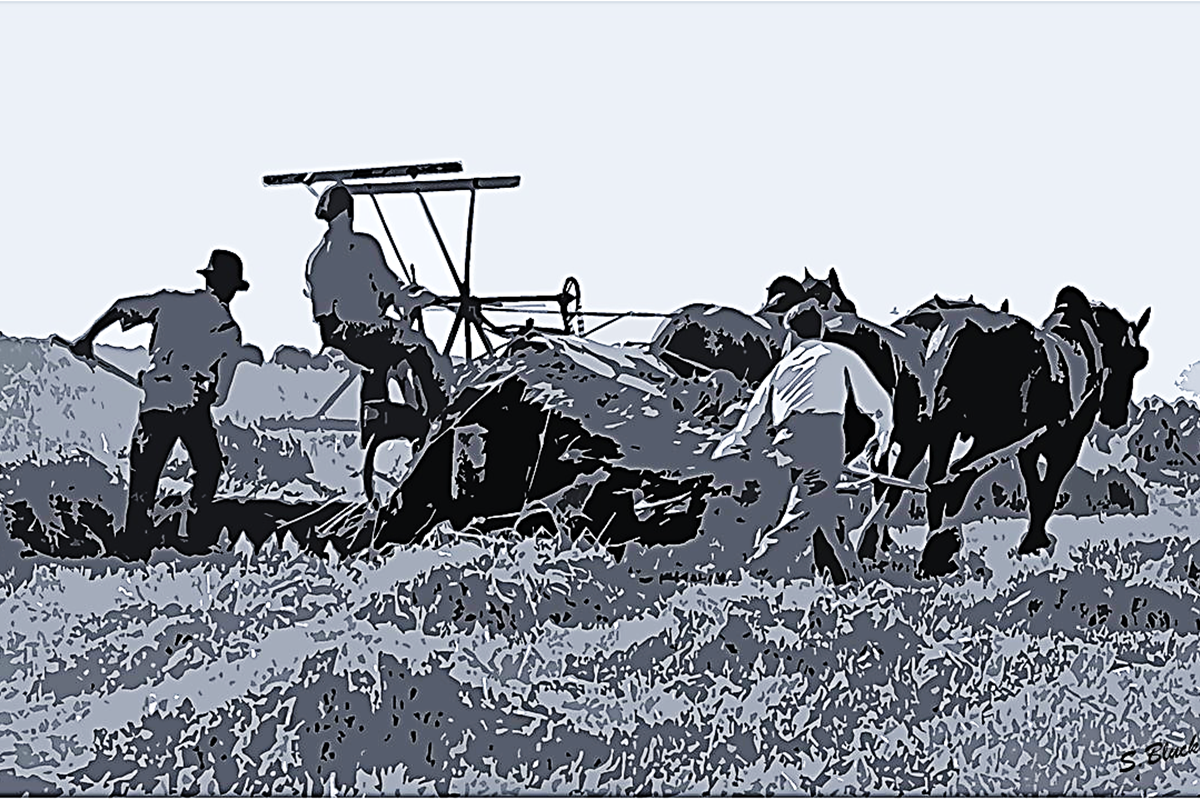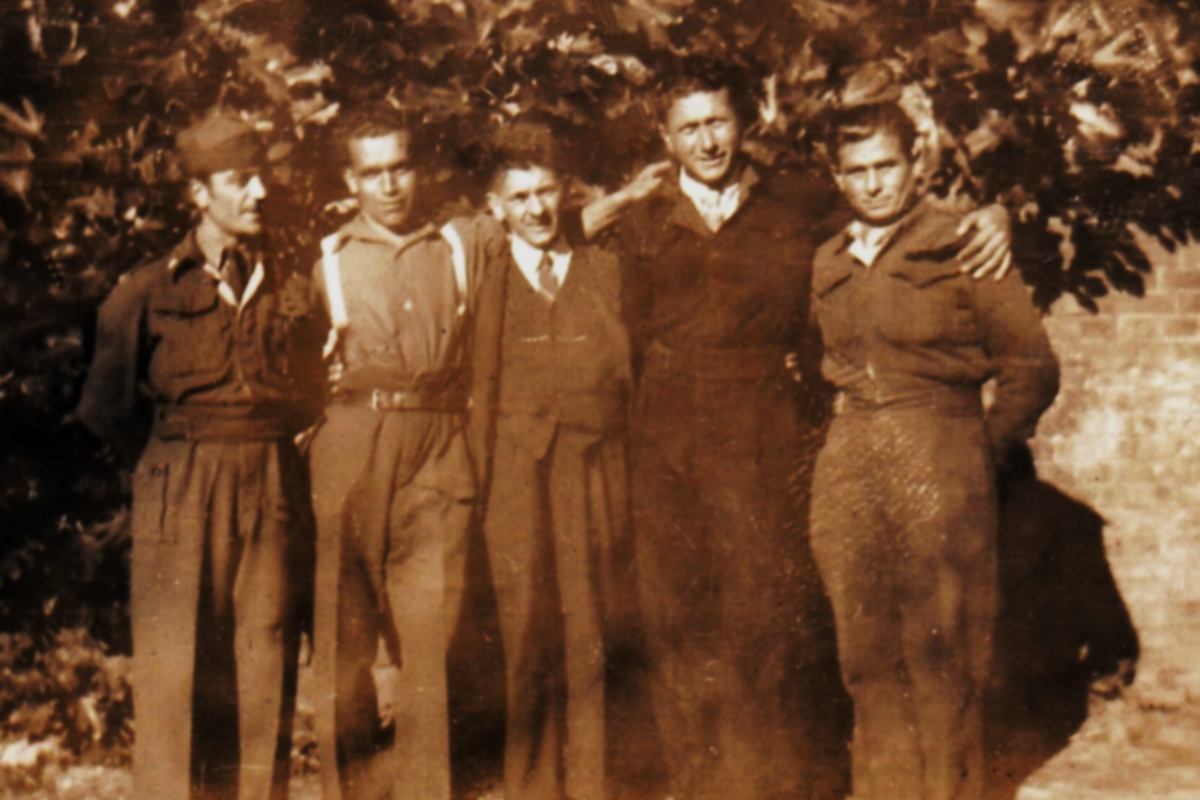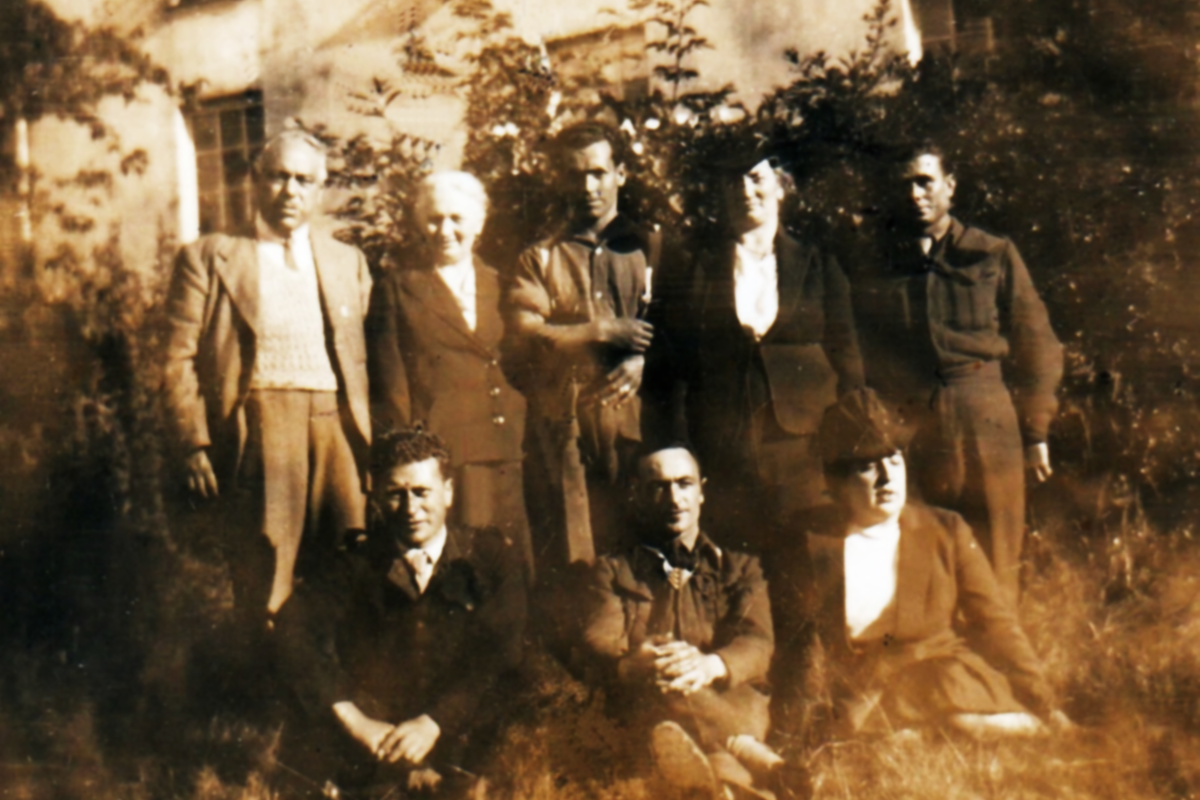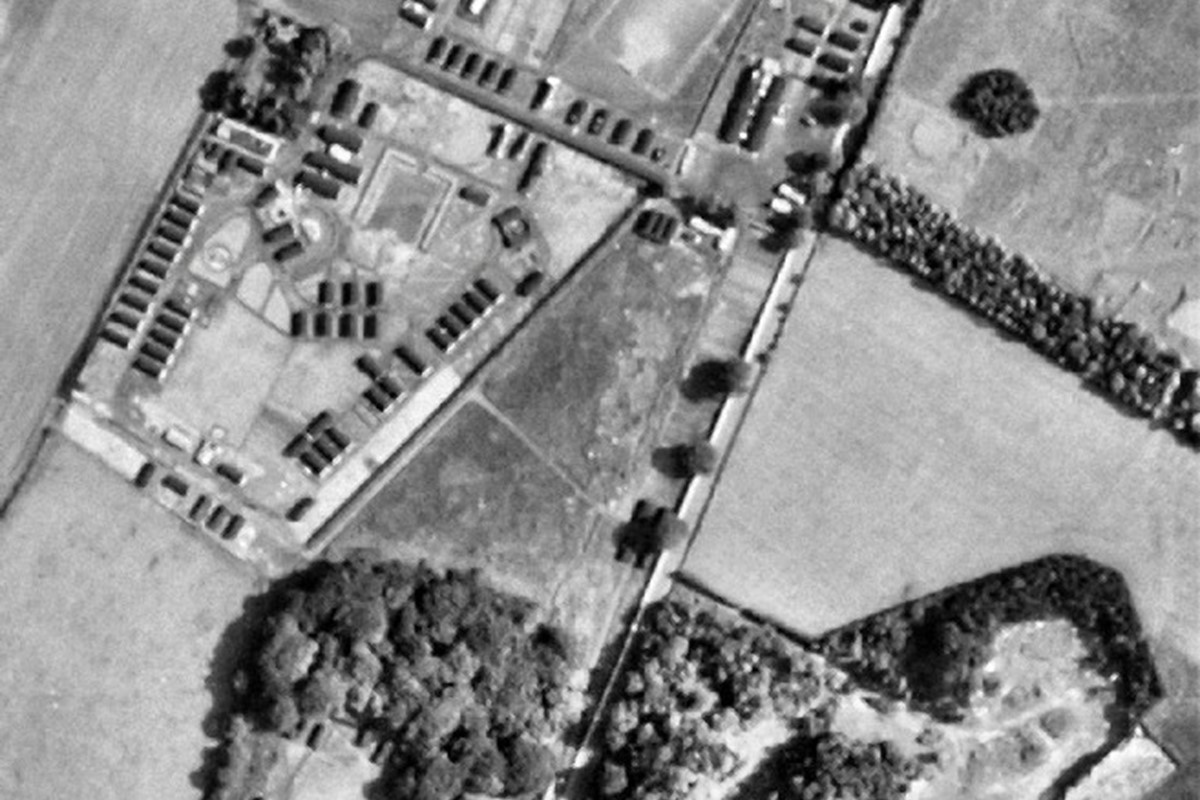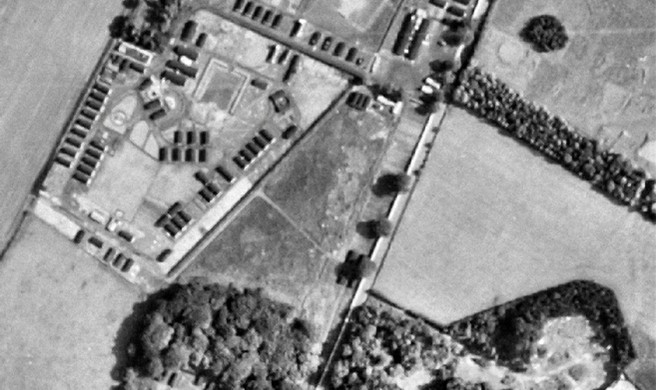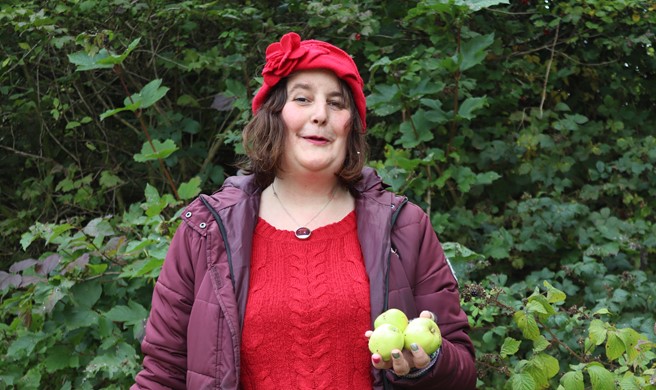Patterton’s Prisoners of War (POWs)
How would it have felt to be a prisoner of war at Patterton POW Camp during World War II and its immediate aftermath? Obviously, in some ways it would have been different for every individual there. However, by examining the documentary and photographic evidence along with new oral and written testimony generated though the ‘Patterton WWII: A POW Camp and its Neighbours’ project, we can locate the history within the wider context and we begin to glean some insight into the lives of the men who spent some of their days there.
The Italians
The documentary evidence currently available points to the first POWs arriving at Patterton Camp in May 1944 and leaving in May 1945. This comes in the form of the war diaries of the Italian working companies 556 (formerly 602) and 625. We also know from documentary evidence, found in an International Committee of the Red Cross report of November 1947 and four post-war surveys of the education programme undertaken by the Germans, that German working company 660 arrived in the camp in 1945, after the departure of the Italian working companies. It is documented that they were there until at least June 1947. There is anecdotal evidence that hints that there may have been both German and/or Italians POWs in the camp before the dates given in the aforementioned official documents. Indeed, we also have documentary evidence of one German-speaking civilian at the camp and testimony that Italian internees were in the camp as early as 1943.
As already stated, Italian working companies arrived at the camp in May 1944 and stayed for a year. The documentary evidence that is available for the stay of Italian POWs is in the form of the war diaries of Italian working companies. There is no note of their numbers in the war diaries. We do know that they would have been allowed a certain amount of freedom as Italy had capitulated by this point, so conditions both in and outside the camp would have affected them.
An educational survey from August 1945 states that conditions were ‘dreadful’ when the Germans arrived a year later. By ‘dreadful’ they meant that the camp, which was built on clay soil, was extremely boggy and wet. Photographic evidence that shows that the Italian POWs at Patterton were equipped with boots, though the quality of the boots is unclear. The Italians, it must be remembered, had been through war and many would have come from rural areas. Whilst they may have found the soggy underfoot conditions unpleasant, most of them would probably have been quite resilient to these circumstances. At the same time, some of them would have been experiencing homesickness and trauma. Our respondent James Rodger (aged approximately 90) was inside the camp in around 1941, when the he says the British Army were there, and he reports seeing Nissan Huts with wood burning stoves in them for heating. We can reasonably assume that the stoves were still there in 1944, as the Red Cross report on the Germans from 17th November 1945 asserts that there were stoves. These would have provided a little comfort, at least.
There are no Red Cross reports available for the time that the Italians stayed at the camp and the war diaries do not refer to health conditions, so it is uncertain whether these wet conditions caused any health issues. It is probable that none of them died whilst at the camp as a result of these wet conditions, as the war diaries for both Italian working companies only record the deaths of one soldier, and that was as a result of a road accident near the camp. Another two Italians were killed in an accident involving a boiler explosion at a workplace in Kilmarnock, along with the father of our respondent, Jim Boyd. A potential suicide is also mentioned but is not clear whether or not this actually happened.
These deaths would obviously have had an impact on the morale of the POWs at the camp, some of whom may have been friends with the men who died. Unfortunately, they would have been familiar with death, living, as they did, in a time of war and the often-unsafe workplaces, which were commonplace at the time. Equally, it is unlikely that this made their grief or disquiet at these events any less acute.
The camp had two Italian doctors who arrived at different times, which would mean that the POWs would have had access, at least some of the time, to doctors with whom they could converse reasonably well and this would, most likely, have been beneficial to their health care.
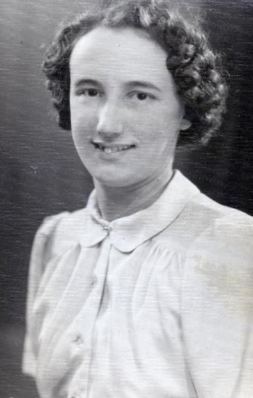
Our respondent, Jim Boyd’s,
late mother
Jean Watson Boyd (Born 1921)
The war diaries show us that three permanently sick Italian POWs were transferred to Ascot Camp in Berkshire. This may have been because it was a winter quartering camp and therefore presumablymore comfortable, or it may have had better medical facilities than those available at Patterton. The Red Cross report of 17th November 1945 on Germany Working Company 660 at Patterton Camp refers to an infirmary composed of three wooden huts. It states that this was still under construction at this point and that it was not winter ready. It is unclear which of the other facilities, that existed during the Germans stay, would have been available to the Italians. However, as Patterton was a military training camp before and probably during the POW phase, it is possible that the Italians had some access to existing facilities created for the British soldiers.
Our respondent Alan Flower (born 1939) ended up inside the camp, when he was a small boy, and thinks he saw the inside of the infirmary. He thinks he may be the only person ever to have broken into a POW camp:
This is a story that I’ve told over the years. I was out with my eldest brother on this so-called bogey [similar to a go-cart], which consisted of a tricycle with a plank at the back. And we pushed this up to the top of the Patterton hill near Hutchesons, which is, or was rather, a confectioner, and newsagents. And at that location there was a sentry box and a guard watching everything that was going on. And my brother and I set off down the hill being pushed, initially, by the guard. And, as we went down, we careered off the road, hit the fence and the back plank flipped up and I was thrown right over into the camp. Now, I can’t remember how high this fence was. But I always remember that the actual camp itself…it wasn’t what you’d call high security. Anyway, I landed in the camp. Then I was approached by, I think they were Italians, who had been pottering about in the [camp] garden. And they took me down to the medical centre where I was patched up, because I had various cuts and bruises. And then they gave me chocolate. And then they took me down to the guard house, which was at the bottom end of the camp. And my brother picked me up at that point, and we headed home.
This testimony shows that there were at least rudimentary medical facilities at the camp during the Italians’ stay. Alan also mentions that there was a garden in the camp and the war diaries contain an entry about the garden, which notes that the company garden was judged and received third prize. It is unclear what the competition was, but it shows that the men took pride in their garden. Gardening would no doubt have been therapeutic for the prisoners as well as providing them with exercise and fresh produce, which would have helped to keep them healthy.
The Daily Record Friday 29th December 1944
Triple Tragedy in Kilmarnock
Scaldings in Boiler House
An accident which resulted in the loss of three lives occurred in the Grand Hall, Kilmarnock, yesterday afternoon. Mr Frank Boyd, Green Street, Kilmarnock, caretaker of the hall and two Italian soldiers were engaged in their duties at the boiler-house when there was a rush of steam. All three were badly scalded.
Mr Boyd and one of the soldiers were found to be dead on arrival at the Infirmary. The other soldiers died two hours later.
Mr Boyd would have been 50 years of age to-day. He had been Town Officer and Keeper of the Corporation halls since November 1933.
“[My mum] said, I presume it was Italian prisoners, they would cut up their army blankets, sew them and be waving them, wanting you to buy them. I presume it would be the barter system. Maybe it was for money so that they could buy things in the little shop. I’m not sure. But they would wave the slippers, hoping people, whoever, would buy them off them.
Remember when the war started, Britain got nervous of any foreign nationals living here. And I’m thinking that’s why they were prisoners. Not because they’d done anything wrong. Just because they were living in Britain. Just by talking to different neighbours and they just said they were warned. Their parents warned them to keep well away….I don’t get that. Did they think the prisoners were going to attack them? Because they were under guard when they walked down the road. It’s not like somebody was going to jump out and…with a weapon. So, the children on the whole just kept well away.
[Mum] made a comment. She asked if the prisoners, the Italian prisoners, would be allowed out to come and paper her house. Because they were renting a farmhouse at Crosslees Farm, Rouken Glen. And she asked if they would be allowed out to come and paper. This was when they were being marched down to the print works at Spiersbridge.”
Norma Wilson
Another respondent, Matthew McKinnon (born 1938), walked past the camp as a child and remembers his parents talking to the Italians through the fence. He had an impression that they were reasonably content given their circumstances:
I didn’t ever see any hostility to the prisoners by people walking by, or anything. So…from the attitude of the prisoners that came to wire, they seemed as contented as prisoners could be. You know, they could laugh and smile and joke and so on…So, I guess that would be in the summertime. They had a kind of area where they could play games and football and stuff.
James Rodger also stated that the Italian prisoners got a good reception in the local area and several respondents have backed this up. There would have been those local people that, perhaps understandably, had issues with the Italian prisoners due to the wartime situation and their close proximity to local females. This was the case nationwide and we have hints of this in some of our oral testimony.
We also have testimony that local girls and women would also visit the prisoners and that some of the girls had crushes on the prisoners. Although illegal at the time, it is clear from the testimony that fraternising, as it was known, sometimes happened. Testimony from James Rodger shows that some of the Italian prisoners dated and may even have married local girls. He tells us that some of the women from nearby Thornliebank, who worked at the Netherplace Dye Works in Newton Mearns, possibly later married Italians from the camp.
However, some locals were wary of the Italians being around their daughters and we have at least two accounts of this. Susan McClelland (born 1929) remembers one local girl, who was older than her, climbing out of her window to meet the Italians. Susan’s mother used to chase them away when they dared to look at Susan’s older, quite attractive, sister:
[They were] very lonely I felt. They would come, walk the streets. They would go to the picture hall as well. And we would sit next to them in the pictures. And they would walk the streets. And I’d an older sister and my mother used to get quite annoyed when they would stand and look, maybe at my sister in the garden. And she used to come out and shout “Away about your business” (laughs). Poor souls. But they were just…they walked in twos. Always in twos. Quite sad as well. But they were no bother. No bother….
We have recorded other fascinating insights into Patterton Camp. For example, we have heard from Sandro Sarti and others that local Italian women took food to the camp, though we do not know if this consisted of traditional Italian favourites as the necessary ingredients would have been difficult to source. Scots also visited the prisoners, and at least one local man, a serving soldier in the Pioneer Corps and the father of our respondent Susan McClelland, would go into the camp with sweets and juice. It is possible that he had been based at the camp at some point.
Sandro Sarti remembers stories about Patterton POW Camp:
What I know about Patterton Camp was, my mother, Luigina, she was a Fazzi, that was her maiden name. What she told me…and the conversation with my mother used to crop up…I used to remember seeing the foundations of huts there. And I believe there are still one or two left. And in the conversation with my mother saying that, of course, she used to go and bring the prisoners, the Italian prisoners there, little gifts of food or shaving stuff. And a lot of the girls, her friends, would also go up to the Patterton camp with little gifts. I think because they fancied the soldiers that were there.
I suppose she did feel sorry for the prisoners. Although, I suppose, in a way, she used to say they were some of the lucky ones who weren’t involved in the war. They weren’t badly treated. Some of the older girls, my mother was quite young at that time, yeah, some of the girls fancied some of the guys in the camp. And, I had heard, that at the end of the war, some of them went, the majority, I think, went back to Italy
Matthew McKinnon was a small boy at the time but remembers this:
We would take the bus to the Newton Mearns bus depot, which is where the Asda supermarket is now. Then we would walk down the hill where there was a field and a farm and a river. Paddle in the river, have a picnic… and then we would walk down the Stewarton Road and past the camp. So, we did that on numerous occasions. And, the prisoners would come to the wire as we came down and we would always stop and chat with them. They were always attracted by the large number of young people. Because they thought my father and mother had all these children. They did have six (laughs), but there was probably at least a dozen of us there…on occasions, my father would have to bring the six of us together and say, “This is my six, and these are friends”, sort of thing. Yeah, so that was really our connection with the camp.
There were countless numbers of times that we walked down the road and interacted with the campers. It was my father and mother who were conducting the conversations with the Italians and so on…and we were just children laughing and playing around. So, I don’t really have any personal conversation I can tell you about with Italian prisoners of war. But they were always friendly and happy encounters. There was always a nice atmosphere. People were laughing and joking and waving their arms around and so on…I was never in the camp. We saw all the Nissan huts where the prisoners stayed.
I didn’t ever see any hostility to the prisoners by people walking by, or anything…from the attitude of the prisoners that came to wire, they seemed as contented as prisoners could be. You know, they would laugh and smile and joke, and so on…So, I guess that would be in the summertime. They had a kind of area where they could play games and football and stuff.
Patterton Memories
“The kitchen in my great uncle’s small holding in the Mearns was supposedly put in by a German POW. The Smiths lived at No.4 Pilmuir Holdings on Malletsheugh Road. The house and land aren’t in the family anymore and the original house has been demolished and replaced. The story that I heard was a German POW worked there and did odd jobs (my great grandfather was a market gardener and there were greenhouses around the place then). The POW did work on the house and installed the kitchen that was still there until a renovation in 1998.”
David Smith
“[Italian prisoners] used to wear brown uniforms with large yellow patch on the back, and on a Sunday the POWs marched to the Avon cinema, pictures, in Thornliebank.”
John MacDonald
“My mother spoke of the POW’s marching through the village of Thornliebank on a Sunday. I didn’t realise they were going to the Avion picture house. Amazing!”
Joan Livingston
“My Uncle Richard was there [Patterton POW Camp]! Now a modern suburb of Glasgow still called Patterton, though my mother and aunts would visit him through the wire taking food, etc. Eventually he was shipped off to Canada for the duration.”
Ronald Pierotti
Interestingly, there is also anecdotal evidence that there were possibly civilian internees in the camp at the same time as the POWs. These may have been belligerents who lived in the UK at the outbreak of war and were considered a security risk; perhaps they were conscientious objectors; they may even have been Scottish prisoners that could not be housed in British jails at that time.
From August 1944, the Italian prisoners were allowed out to go to the cinema; outings are recorded in the war diaries and in oral testimonies. This activity would have given them distraction and entertainment as well giving them the opportunity to chart the progress of the war through newsreels. Two of our respondents remember seeing the Italian prisoners of war at the Avion cinema and at a local café, Leo’s in nearby Thornliebank. We also have anecdotal evidence of them visiting a local chip shop at the corner of Main Street and Barrhead Road in Newton Mearns. Anna Webster (born 1929) remembers feeling a little bit of resentment towards them but does not remember hearing it from anyone else in her circle:
Well, you were young. You know, you didnae really…I don’t know what I really thought. I wouldnae o’ spoke to them or anything, you know… I mean seeing them in the picture halls, I didnae think that was fair. That they’d actually started it [the war] and you know, and they were enjoying themselves in the picture halls…and other soldiers, British soldiers, were still overseas fighting and getting killed, you know. You think o’ that. But then you’re young.
Matthew McKinnon points to another of the ways in which the Italian prisoners would have found a distraction from thoughts of home and of death and conflict. There was a football pitch in the camp. The war diaries show that the Italians played football during their stay against local team Nitshill Victoria. This activity would have provided them with fun and exercise and with a forum for interaction with the local community.
Don Campbell recalls that the Italian prisoners had other forms of amusement:
I was born and brought up in Carnwadric… I guess I did not understand what the 'Tallies camp', was all about. It was near the station and we would walk or cycle up there, hide in the trees on the opposite side of the road and throw stones at the Nissan huts in the camp. I do not know if the POWs complained to the sentries but eventually, they chased us away. POWs must have been allowed into Thornliebank since I can remember the guys with the patches on their back. My other connection was of a ‘sexual' memory. I was in the Cubs who met in Thornliebank CoS at Speirsbridge. My 'Akela' [leader of the group] was a cracking blond who led us up the Patterton Road to study the countryside around the camp, where Ms Macauslin was treated to Italian wolf whistles. I do not remember what we cubs thought about this, but we did suspect that this may have been the motive for the walk.
We have testimony from respondent Paul Gillies, talking on behalf of his aunt who is in her 90s, that the Italians visited the centre of Newton Mearns and that Saint Cadoc’s Catholic church was often a social hub. The altar in the chapel was screened off and the Italians would sing along to the piano-playing of the priest or Monseigneur, named Brendan Murphy. Our respondent thinks that there may have been dancing going on, too, as his then teenage aunt was scolded by her father for attending. No doubt the Italians would have also attended chapel there, which would have provided them with some comfort as many of them would have been religious. We also have anecdotal evidence that they attended St Vincent’s RC chapel in Thornliebank.
The Italians worked in a variety of places both close to the camp and further afield during their year at Patterton, including at the Royal Army Service Corps and Royal Engineer Stores depots in and around Glasgow, and at the RASC depot in Kilmarnock. They also worked at Shawfield in Glasgow, at Belleisle Camp in Ayr, and at Dechmont Rifle Ranges near Cambuslang. We have additional testimony that they worked on local farms in and around Patterton. Indeed, it seems that Patterton’s Italian POWs were often in demand during this period, when many British males were enlisted in the forces or occupied with industrial war-work. We cannot be sure how the work that they did would have affected their state of mind. The fact that they were often working in places that were linked to the Allied war effort may have made them feel trusted as co-operators. This would no doubt be good for their morale. Like any work situation there no doubt would have been difficulties, but the work would have provided them with some spending money for when they were out and about in the local area. What is clear is that they would have spent most of their time during their stay working.
Alistair Mutrie ( born 1943 ) remembers hearing about them being marched to the Royal Army Services depot in Thornliebank, where his father worked. He stated that the prisoners used to hand out toys to children along the way. He said that this seemed to have endeared them to those he spoke with and that he never heard anything bad said about the prisoners by these people. Perhaps the fact that they were now working towards the allied war effort would have endeared them to some members of the local population. The Italian Working Company 556 (formerly 602) and Italian Working Company 625 left the camp on the 23rd of May 1945.
Daniele Salvatore gave the following information:
I was born in Filignano on 1943; when the fightings around Montecasino started I was about 6 months old; together with my mother and my grandparents we were there, and we survived. Both my grandparents, father side, are buried in Glasgow cemeteries; I visited Glasgow the first time in 1952 and I have been there many other times. I enclose two photos of Italian POWs at Patterton with the names I know.
One of our respondents remembers the Italians leaving the camp:
Finally, when the Italian phase of the camp was winding up, there was a convoy of trucks passing through the village. My gang was out there to witness this. One of the trucks stopped and one of the POWs gave me a shell, without the warhead, of course. He said something to me showing that he recognized us, and this was a leaving gift. There was some discussion, with a school of thought suggesting they wanted to blow us up to pay us back for the stones! My mother would not let it in the house and when my dad came in, an old soldier, he ruled it was safe. (Don Campbell)
However, not all the Italians left, or perhaps they later returned. Whatever the sequence of events, local people remember that Italians certainly worked in the area until the 1950s and before moving on, perhaps to other parts of Scotland. John Manson remembers former Italian POWs working on farm long after the end of the war:
There was still, as I say, some of the Italians, a couple of the Italians, worked in the farms. I can’t remember the family. It’s up where I said. If you imagine the dams being on left hand side, on the hill, there was this other farm
